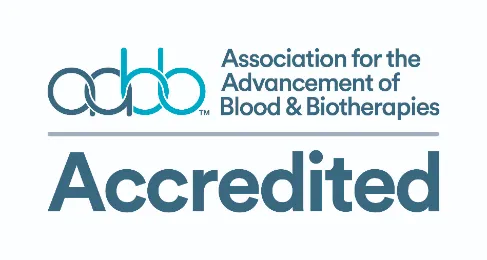Clinical, Cosmetic and Investigational Dermatology, 28/08/2025
Introduction
Hair loss disorders such as androgenetic alopecia (AGA) and other non-scarring alopecias are a significant cosmetic and psychologic issue in men and women. While present therapies such as minoxidil, finasteride, and hair transplantation yield some benefit, their limitations have generated interest in regenerative therapies.
In the last few years, mesenchymal stem cell (MSC)-derived exosomes have emerged as cell-free therapeutics due to their ability to facilitate intercellular communication and contain a variety of bioactive molecules that can potentially stimulate hair follicle regeneration.
Studies
| Exosome source | Study design | Level (*) | Result | Adverse event |
| Placenta | 12 patients with AGA received intradermal injections of P-MSC exosomes every two weeks for two months (Dehghani et al) | II | Hair density increase from 96.5 to 163.5 hairs/cm² (p<0.0001);
Hair diameter increase from 0.049 mm to 0.059 mm (p<0.0001); Hair loss counts also dropped markedly, from 200 to 80 hairs (p<0.0001). |
No |
| A patient with persistent chemotherapy-induced alopecia after three sessions of subcutaneous P-MSC exosome injections (Norooznezhad et al) | IV | Complete terminal hair regrowth | No | |
| Foreskin | 30 male patients with AGA received intradermal exosome injections using the nappage technique over 12 weeks (Ersan et al) | II | Mean hair density rising from 149.7 to 157 hairs/cm²;
Patient satisfaction was notably high. |
No |
| Adipose | 85 patients with AGA received intradermal ADMSC exosome injections combined with microneedling over 12 weeks (Nadeem et al) | I | Increase hair density (by 35 hairs/cm², p=0.001);
Increase hair thickness (by 13.01 µm, p=0.001); High patient satisfaction (8.5/10). |
Only mild, transient redness reported in 20% of cases |
| 16 males with mild to moderate AGA, using microneedling plus topical ADMSC exosome application for 12 months (Wan et al) | II | Hair density increased by 35 hairs/cm² (SD=6.5);
80% of patients reported noticeable improvement, with only minor scalp irritation that resolved quickly. |
Only minor scalp irritation that resolved quickly | |
| 39 patients received microneedle roller application of ASC-exosomes for 12 weeks of weekly (Park et al) | III | 24.9 hairs/cm² increase in density (p<0.001);
8.8 µm increase in thickness (p<0.001). |
No | |
| Hair follicle | 60 patients (both male and female) received autologous micrografts containing HF-MSCs and exosomes for 12 months (Gentile et al) | III | Hair density increased significantly by +28 ± 4 hairs/cm² in female pattern hair loss (FPHL);
+30 ± 5 hairs/cm² in male pattern hair loss (MPHL) (p<0.05); Patient satisfaction was high, with 80% of participants indicating a good level of satisfaction regarding scalp coverage. |
Minor adverse events, such as itching, redness, numbness, and headaches, were reported but were not severe |
| Bone marrow | 31 patients with male and female pattern hair loss received a single intradermal injection of bone marrow MSC-derived extracellular vesicles, sometimes combined with microneedling and low-level laser therapy ( Sasaki et al) | IV | 11.1–24.2% increase in hair density over six months;
High levels of satisfaction reported by both males (88.9% satisfied to extremely satisfied) and females (54.5% very satisfied). |
Only transient swelling or pain attributed to microneedling |
| Umbilical cord | A single male patient with AGA received scalp injections of exosome-rich conditioned medium (Lueangarun et al) | II | Significant improvements in both hair density and thickness at six months. | No |
| Plant extract | Exosome formulation containing Ecklonia cava and Thuja orientalis extracts in a pilot RCT of 20 males with AGA (Amini et al) | I | A median increase of 9.5 hairs compared to 1.5 in placebo (p=0.006);
Significantly higher self-perceived satisfaction (4.2/5 vs 2.9/5, p=0.013). |
Mild scalp irritation occurred in 20% of patients treated |
(*) The overall quality of evidence was assessed using a modified Oxford Centre for Evidence-Based Medicine (OCEBM) scale. (Level I: High-quality RCTs, Level II: Prospective cohort studies, Level III: Retrospective observational studies, Level IV: Case series and reports)
Discussion
- Exosome therapy shows potential not only for AGA but also for broader application like chemotherapy-induced alopecia and trichorrhexis nodosa.
- Patient satisfaction was consistently high in exosome-treated cohorts, aligning with observed improvements in objective assessments and the lack of invasiveness and side-effect profile of exosome treatment.
- Mild, transient adverse effects such as redness, itching, and pain at the injection site were the most common events.
- There were no reports of severe systemic reactions, infections, or immune responses, supporting the clinical safety of exosome therapy, even with off-label or non-standardized regimens.
- Limitations such as study heterogeneity, study design, outcome variability and lack of standardization make it difficult to compare results, draw firm conclusions, and ensure clinical reproducibility.
Conclusion
Exosome therapy was generally safe and well-tolerated across all included studies. Reported adverse events were predominantly mild and transient, such as local scalp irritation, redness, swelling, and itching. These effects were resolved spontaneously and did not necessitate treatment discontinuation. Importantly, no serious systemic complications, allergic reactions, or long-term adverse effects were observed. The absence of significant immunogenicity or infection across multiple formulations, including those derived from allogenic sources like placenta, umbilical cord, or bone marrow, underscores the favorable safety profile of exosome therapies when prepared and administered under appropriate clinical protocols.
References
Al Ameer, Mohammed A, et al. “Exosomes and Hair Regeneration: A Systematic Review of Clinical Evidence across Alopecia Types and Exosome Sources.” Clinical, Cosmetic and Investigational Dermatology, vol. 18, Oct. 2025, pp. 2215–2227, pubmed.ncbi.nlm.nih.gov/40955427/, https://doi.org/10.2147/CCID.S543451.
Source: Clinical, Cosmetic and Investigational Dermatology
Link: https://www.tandfonline.com/doi/full/10.2147/CCID.S543451#abstract







